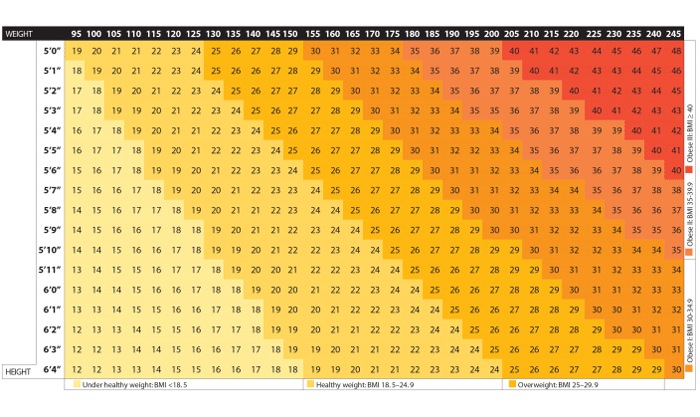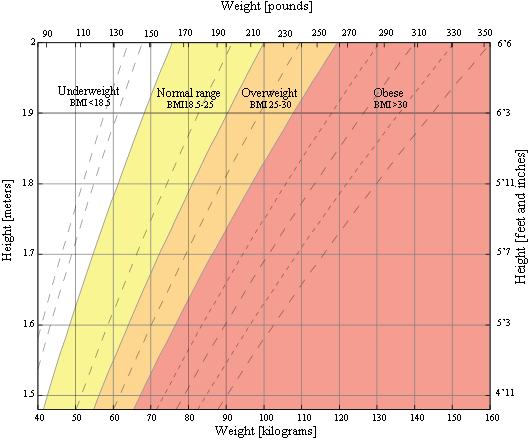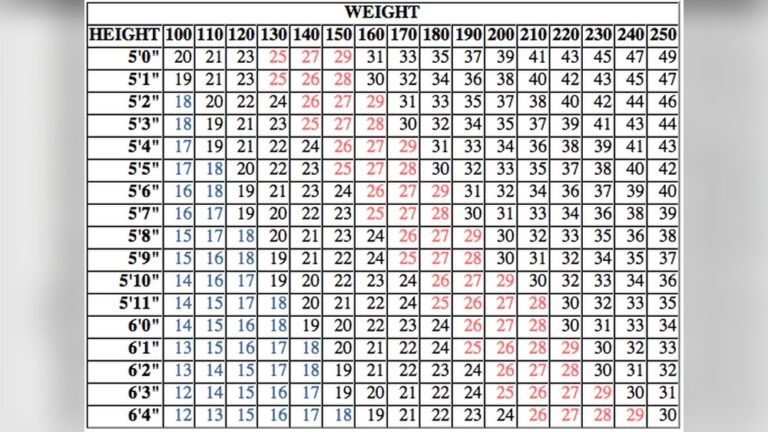Are you curious about how your weight stacks up in relation to your height? Using a BMI calculator with pounds (lbs) can give you a quick snapshot of your body mass index—a simple number that helps you understand if you’re in a healthy weight range.
But why should you care? Because knowing your BMI can guide you toward better health choices and keep you on track with your fitness goals. You’ll learn exactly how to calculate your BMI using pounds, what the numbers mean, and why BMI matters for your well-being.
Keep reading to discover an easy way to take control of your health starting today.
What Is Bmi
BMI stands for Body Mass Index. It is a simple number calculated from your weight and height. BMI helps indicate if your weight is in a healthy range.
Many people use pounds and inches in the United States. That is why the BMI calculator in lbs is popular. It makes it easy to find your BMI without converting units.
Bmi Definition
BMI is a number that shows your body size. It compares your weight in pounds to your height in inches. The formula is weight divided by height squared, then multiplied by 703. This gives a number to understand weight status.
BMI does not measure body fat directly. It is a quick way to check if weight is too low, normal, or too high. Doctors use BMI to screen for weight problems.
Why Bmi Matters
BMI helps predict health risks linked to weight. High BMI can mean higher risk for diseases like diabetes and heart problems. Low BMI may show malnutrition or other health issues.
It is a useful tool for tracking weight changes over time. People can see if they are moving toward a healthier weight. BMI is not perfect but gives a good starting point for health discussions.
Calculating Bmi In Pounds
Calculating Body Mass Index (BMI) using pounds is a simple way to understand your body’s health status. BMI helps estimate if your weight is in a healthy range based on your height. It uses pounds for weight and inches for height, which fits well with the U.S. customary system.
Knowing how to calculate BMI in pounds can guide your fitness and health decisions. It is a useful tool for adults to track their weight relative to height. The calculation involves a clear formula and a few easy steps.
Required Measurements
First, you need to know two key numbers. Your weight in pounds (lbs). Your height in inches (in).
These measurements must be accurate for a correct BMI result. Use a scale for weight and a measuring tape for height.
Step-by-step Calculation
Start by squaring your height in inches. Multiply your height by itself.
Next, divide your weight in pounds by the squared height.
Then, multiply the result by 703. This number adjusts the formula for pounds and inches.
The final number is your BMI. It shows your weight category.
Example Calculation
Suppose you weigh 150 pounds and are 65 inches tall.
Square the height: 65 × 65 = 4225.
Divide weight by squared height: 150 ÷ 4225 ≈ 0.0355.
Multiply by 703: 0.0355 × 703 ≈ 24.95.
Your BMI is about 25, which is on the edge of the normal weight range.
Bmi Categories
Body Mass Index (BMI) helps classify weight status based on height and weight. The BMI categories provide clear ranges to understand if a person is underweight, normal weight, overweight, or obese. These categories assist in assessing health risks linked to body weight.
Normal Weight Range
The normal weight range for BMI falls between 18.5 and 24.9. This range indicates a healthy balance of weight to height. People in this category usually face lower health risks related to weight.
Overweight And Obesity
BMI values from 25.0 to 29.9 indicate overweight status. A BMI of 30 or higher classifies as obesity. Both categories carry increased risks for health issues like heart disease and diabetes.
Underweight Thresholds
A BMI below 18.5 is considered underweight. Being underweight can lead to problems such as weakened immunity or nutritional deficiencies. Monitoring and addressing this category is important for overall health.

Credit: www.medicalnewstoday.com
Age And Bmi
Age plays a key role in understanding Body Mass Index (BMI) results. BMI helps estimate body fat based on weight and height. However, how age affects BMI interpretation is important. Different age groups may have different health risks even with the same BMI number. Knowing these differences aids better health decisions.
Bmi And Adult Age
BMI is a standard tool for adults aged 18 and older. For most adults, a BMI between 18.5 and 24.9 is considered healthy. A BMI from 25 to 29.9 suggests overweight, while 30 or above indicates obesity. These ranges apply regardless of age. But body composition changes with age. Muscle mass tends to decrease and fat may increase. This shift can affect BMI’s accuracy.
Adults should use BMI as a general guide. It does not measure muscle, bone, or fat directly. People with high muscle mass might have a high BMI but low body fat. Age alone does not change BMI categories. Still, understanding age-related changes helps interpret BMI better.
Considerations For Older Adults
Older adults often face different health challenges. BMI ranges for older adults might differ slightly. Some experts suggest a BMI of 25 to 27 can be healthy for older adults. This range may protect against bone loss and muscle loss. Low BMI in older adults could signal malnutrition or frailty.
Age-related muscle loss can make BMI less reliable for older people. It is important to include other measures like waist size and physical fitness. Regular health checkups help assess overall health better. Doctors consider age, medical history, and lifestyle alongside BMI.
Limitations Of Bmi
The Body Mass Index (BMI) calculator in pounds is a common tool to estimate body fat. It helps many people understand if they are underweight, normal, overweight, or obese. Despite its popularity, BMI has clear limits. It does not measure body fat directly or consider other important health factors. Knowing these limits can help you use the BMI calculator more wisely.
Muscle Vs Fat
BMI compares weight to height but cannot tell muscle from fat. Muscle weighs more than fat. A muscular person may have a high BMI but low body fat. This can make BMI misleading for athletes or bodybuilders. It may label them as overweight or obese wrongly. BMI does not show the difference between lean mass and fat mass.
Other Health Factors
BMI does not include many health aspects. It ignores where fat is stored on the body. Belly fat is more harmful than fat in other areas. BMI also does not consider age, sex, or bone density. Older adults may have less muscle but the same BMI. Health risks depend on more than just weight and height. A full health check needs more tests than BMI alone.
Using Bmi For Weight Management
Body Mass Index (BMI) is a helpful tool in managing weight. It uses your weight in pounds and height in inches to give a number. This number shows if your weight is healthy, underweight, or overweight. Using BMI can guide you to make better health choices and track your progress over time.
Remember, BMI is just one measure. It does not show muscle mass or fat distribution. Still, it is a good start for understanding your body weight and setting goals.
Setting Realistic Goals
Use your BMI number to set clear weight goals. Choose targets that are healthy and achievable. Small steps work better than big jumps. For example, aim to lower your BMI gradually over months.
Focus on steady progress, not quick fixes. Healthy eating and regular exercise help reach and keep your goals. Keep track of your BMI to see changes and stay motivated.
When To Seek Medical Advice
BMI alone cannot diagnose health problems. Talk to a doctor if your BMI is very high or low. Medical advice is important if you have other health issues.
A healthcare professional can provide a full health check. They may suggest tests or other ways to measure your body fat. Always ask for help if you feel unsure about your weight or health.
Bmi Calculators And Tools
Body Mass Index (BMI) calculators and tools help measure body fat using weight and height. They offer a quick way to understand if your weight is healthy. Many tools use pounds (lbs) and inches for easy calculation. These tools support better health awareness and tracking.
Different types of BMI calculators exist. Some are online, others are mobile apps. Healthcare providers also offer resources to check BMI. Each tool serves different needs and preferences.
Online Bmi Calculators
Online BMI calculators are free and easy to use. Enter your weight in pounds and height in inches. The tool calculates your BMI instantly. Many websites offer these calculators with clear instructions. They often provide BMI categories to explain the result.
These calculators are helpful for quick checks at home or work. No installation or special skills are needed to use them. Users can access them from any device connected to the internet.
Mobile Apps
Mobile apps bring BMI calculators to your smartphone. They allow you to track BMI over time and store past results. Some apps include tips for healthy living based on your BMI. They offer convenience and privacy for regular use.
Many apps support pounds and inches input. Users can set reminders to check BMI regularly. Some apps sync with fitness devices for more health data.
Healthcare Resources
Doctors and clinics use BMI calculators as part of health assessments. Healthcare resources provide accurate BMI measurement tools. Professionals explain what your BMI means for your health.
These resources often combine BMI with other health indicators. They guide you on weight management and lifestyle changes. Consulting healthcare providers ensures personalized advice and support.

Credit: www.calculator.net
Alternative Measurements
Alternative measurements offer a clearer picture of your health beyond BMI. BMI only considers weight and height. It does not show fat distribution or muscle mass. These measurements help you understand body composition and risks better.
Body Fat Percentage
Body fat percentage measures how much fat you carry. It shows the ratio of fat to total body weight. Unlike BMI, it distinguishes between fat and muscle. A high body fat percentage can indicate health risks even with normal BMI. Measuring this helps track fitness progress more accurately.
Waist-to-height Ratio
This ratio compares your waist size to your height. It helps identify fat around your belly, which is linked to health problems. A lower waist-to-height ratio means less risk of heart disease and diabetes. It is simple to measure with a tape and gives useful health insights. Many experts consider it better than BMI for predicting health risks.

Credit: www.inchcalculator.com
Conclusion
Using a BMI calculator with pounds helps track your health easily. It gives a quick estimate of your weight category. Remember, BMI does not show muscle or fat details. Always consider other health factors and personal conditions. Consult a doctor for a complete health check.
Staying informed about your BMI supports better lifestyle choices. Keep monitoring your numbers to maintain a healthy balance. Small steps can lead to big health improvements.



